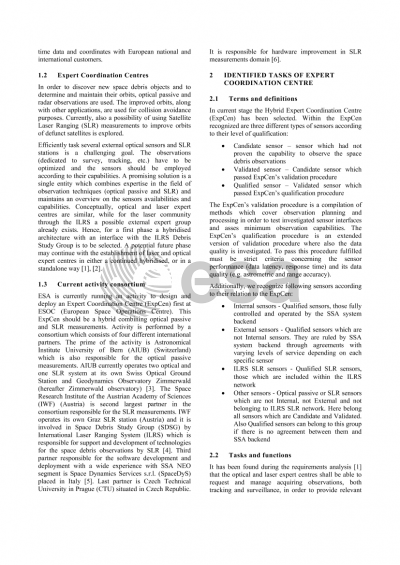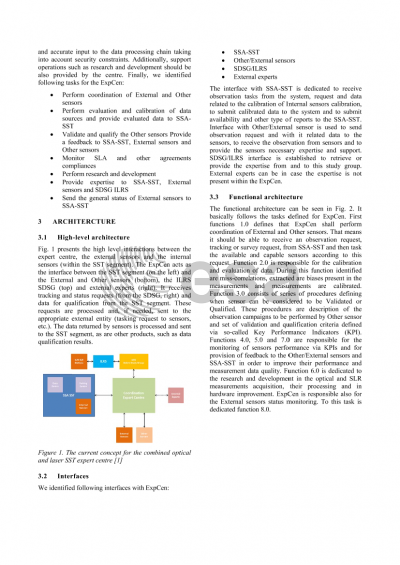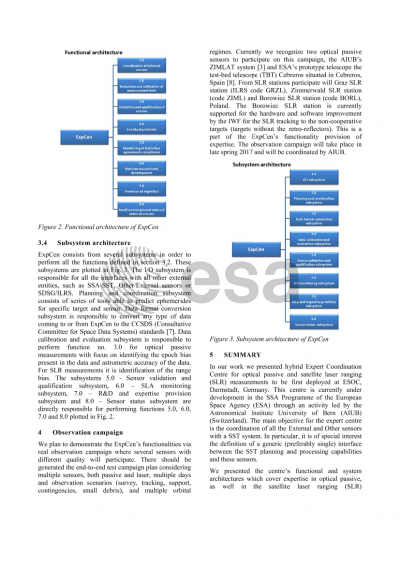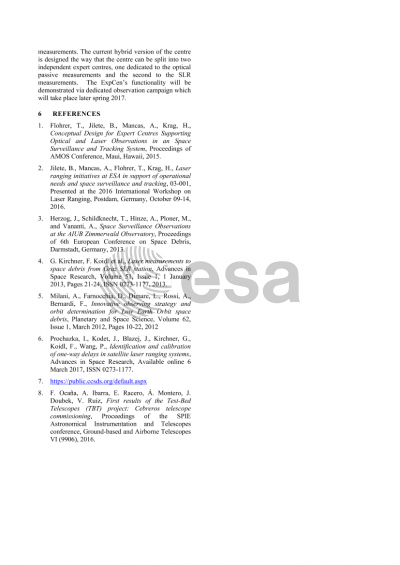Document details
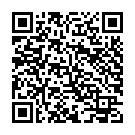
Abstract
The main goal of ESA’s Space Situational Awareness (SSA) programme is to support the independent European utilization and access to space, and the related research and technology development. The SSA program consists of three main segments, namely Space Surveillance and Tracking (SST) of man-made objects, Space Weather (SWE) monitoring and forecast, and Near-Earth Objects (NEO) search and follow-up. SST focuses on research and technology development to maintaining the awareness of the population of man-made objects. Its major tasks are object cataloguing, conjunction risk analysis, re-entry predictions analysis, fragmentation analysis, special mission support, sub-catalogue characterization and mission characterization.
In order to discover new space debris objects and to determine and maintain their orbits, optical passive and radar observations are used. The improved orbits, along with other applications, are used for collision avoidance purposes. Currently, also a possibility of using Satellite Laser Ranging (SLR) measurements to improve orbits of defunct satellites is explored.
In order to efficiently task several system-external optical sensors and SLR stations, the observations (dedicated to survey, tracking, etc.) have to be optimized and the sensor should be employed according to their capabilities. A promising solution is a single entity which combines expertise in the field of observation techniques (optical passive and SLR) and maintains an overview on the sensors availabilities and capabilities. Such an entity can be a Hybrid Expert Coordination Centre (ExpCen) for which the requirements have been formulated in a previous ESA activity. The ExpCen’s main task would be the coordination of external sensors (optical and SLR) for tracking and surveillance, evaluation and qualification of sensors, routine calibration of sensors (including internal SST sensors), and monitoring of service level agreements (SLAs). One of the functionalities of the ExpCen will be research and development of algorithms and tools and its coordination (e.g. for SLR in cooperation with ILRS Space Debris Study Group), and the collection of expert support.
The paper will present the functionalities of the ExpCen, its functional and operational architecture requiring that the optical passive and the SLR functionalities could be detached in future, its interfaces with external entities and the defined ExpCen’s operational procedures.
Preview

